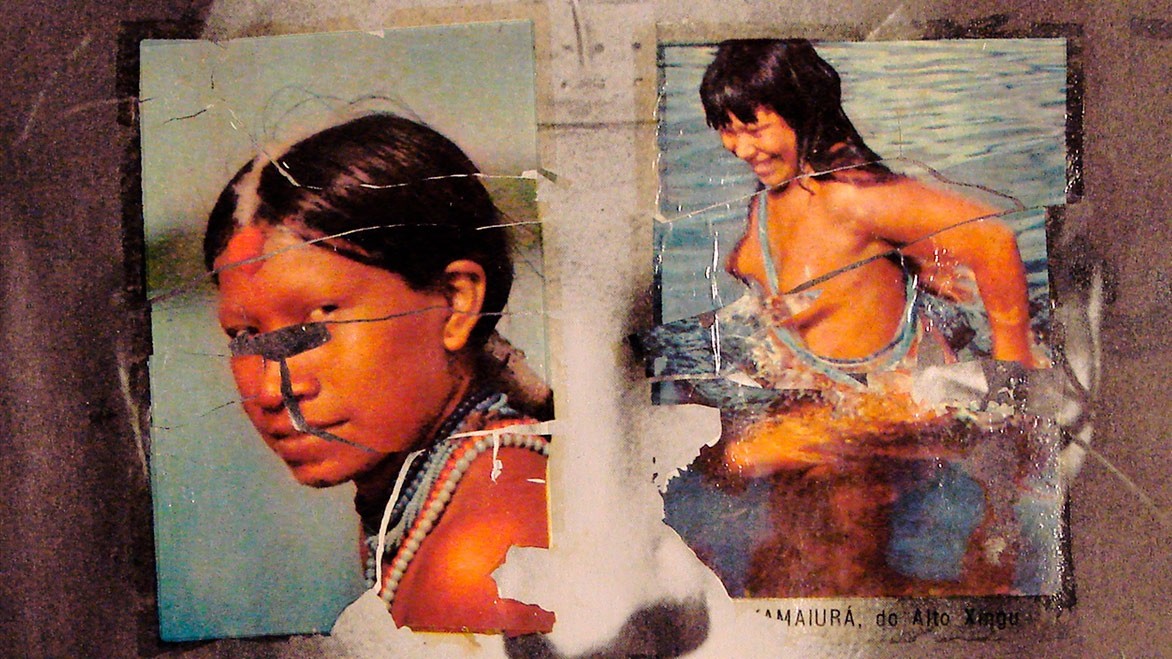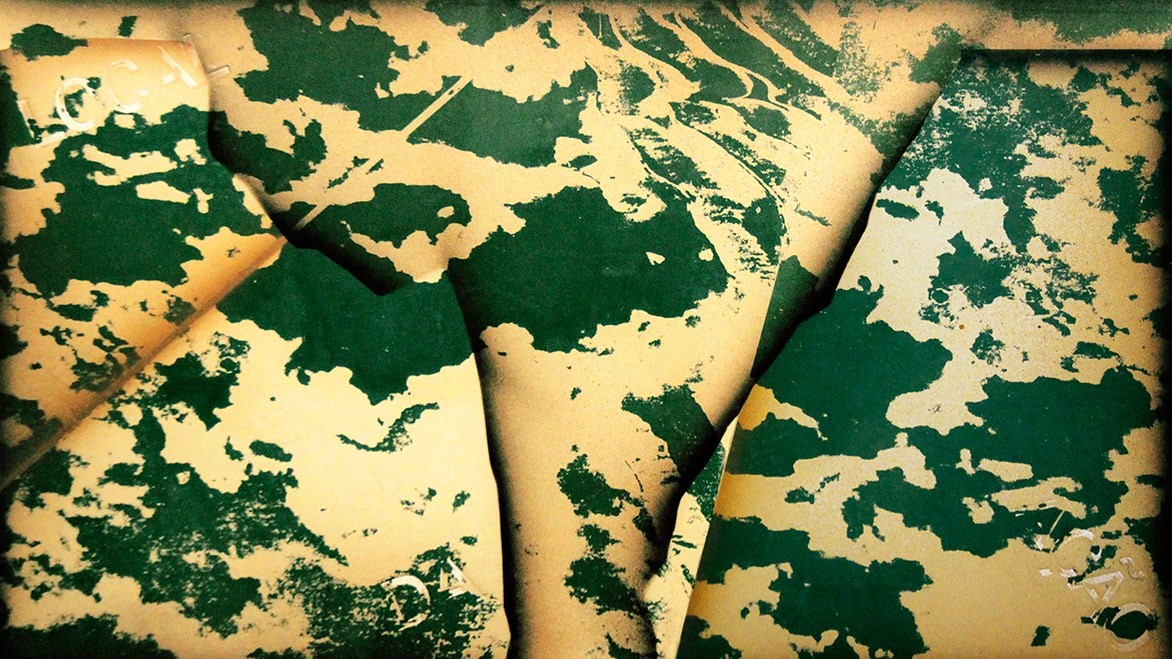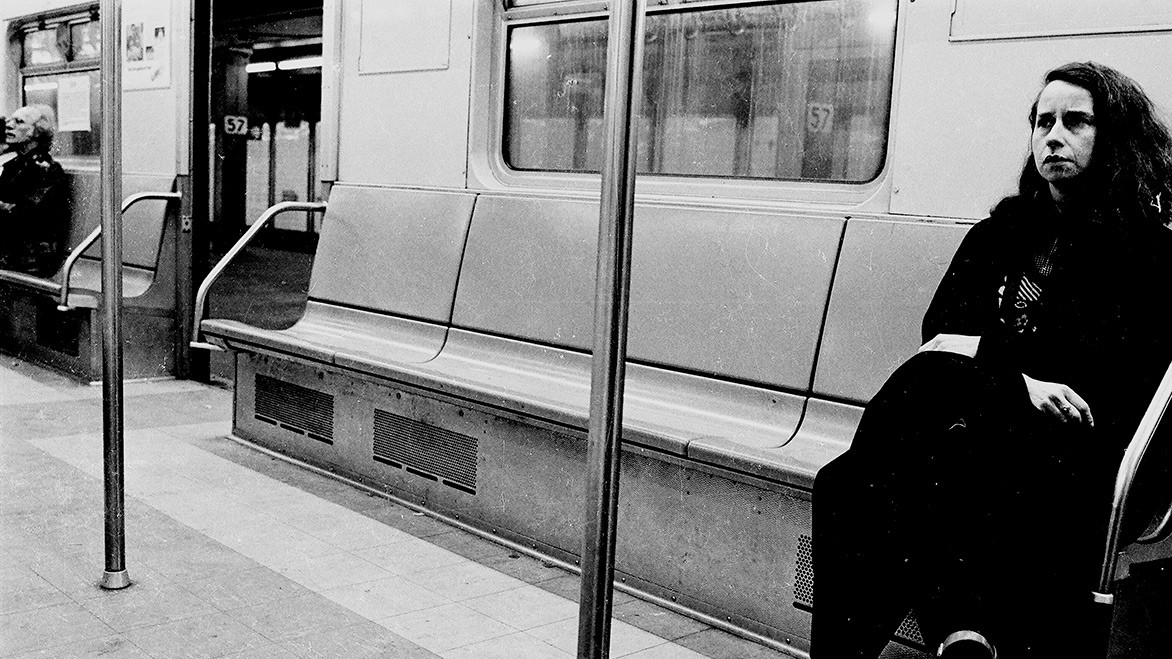Anna Bella Geiger
28 Sep 2017 - 07 Jan 2018
ANNA BELLA GEIGER
Physical and Human Geography
28 September 2017 – 07 January 2018
La Casa Encendida presents the exhibition Physical and Human Geography, by Anna Bella Geiger, a key figure for the understanding of Brazilian conceptual art.
The exhibition, curated by Estrella de Diego and organised in collaboration with the Centro Andaluz de Arte Contemporáneo (CAAC) and the Museo de la Universidad Nacional de Tres de Febrero (MUNTREF) of Buenos Aires, presents a full review of the work of Brazilian artist Anna Bella Geiger (Rio de Janeiro, Brazil, 1933) an indispensable figure in the history of Brazilian conceptual art.
The show includes about one hundred exhibits, ranging from videos and photographs to artist books and samples of photocollage, focusing on two main thematic elements in Geiger’s production: the physical geography and the human geography. On the basis of these two main lines of work, and especially through the use of maps – a fundamental element in her art – the artist reflects upon colonial policies, cultural stereotypes, exclusion, discourses that are imposed by the hegemony, and in particular the ways in which these may be questioned from the perspective of works of art whose finish is fragile and delicate, making them political objects that become poetical objects.
Anna Bella Geiger has had a very fruitful career since her earliest days. Her abstract beginnings in the 1950s soon gave way to a full-fledged conceptual phase, especially after travelling to New York in the 1970s.
After finishing her degree in English Literature at the University of Brazil, the artist married geographer Pedro Geiger in 1956. Even at that early stage, when devoted to abstract painting – her work being included in the First Exhibition of Abstract Art in Petropolis – Geiger was influenced by the teachings of Fayga Ostrower, the Polish master artist of Jewish origins with whom Anna Bella learnt engraving. The technique also led her to learn in an atmosphere of freedom, that was not subjected to the tyranny of a single work form. The concept itself of repetition and series, associated with engraving work, produced ever more fascinating strategies against the discourse of authority, quite often in camouflage, which the artist frequently uses.
From her earliest days she began to work with collage and drawing, photomontage, video, photography, artist books and installations. In 1954 she travelled to New York, where she attended courses and met Henry Kahnweiler, the famous art dealer specialising in Surrealist painting, who took an interest in her work and purchased some of her productions. Geiger returned to the United States in the 1970s, and established contact with personalities like Vito Acconci and Joseph Beuys.
The artist resorts to new narrative formulas, especially those that seek to reverse the telling of the world’s tale from a male point of view. She therefore adopts a fragmented identity and narrative system, which are full of the repetitions and fake repetitions that were so much to the liking of Marcel Duchamp, one of her favourite artists.
The show reveals Geiger’s subtle production, her political commitment, and her peculiar subversion of chronology. In a word, it presents a physical and human geography where the world is rewritten and narrated anew, on the basis of a different look and a different perspective.
Today, following the efforts of gallerists and institutions, the work of Anna Bella Geiger is featured in some of the best museums and collections in the world, such as the MoMA in New York, the Centre Georges Pompidou in Paris, the Getty Collection in Los Angeles, the Victoria & Albert Museum and the Tate Gallery in London, and – in Spain – the Museo Nacional Centro de Arte Reina Sofía (Madrid), the MACBA (Barcelona) and the CGAC (Santiago de Compostela).
In the words of exhibition curator Estrella de Diego, “to draw a map is to trace the schemes of power”. Anna Bella Geiger draws maps, a territory that has historically been reserved for men, as a spatial concept that she then uses to review the political significance of these spaces themselves. Based on this starting point, the artist encourages women to claim back the territory that has been denied to them, and wonders how many maps must be subverted in order to ‘turn around’ the narrative and begin to tell the tale again. Anna Bella Geiger believes that “maps are a representation of the world, with all the implications in terms of dominance and control that the word itself, representation, carries with it”. Maps become, as in the case of Uruguayan Torres García, a territory for subversion.
It is interesting to point out the Jewish-Polish origins of Anna Bella Geiger’s family. This is a family with different customs, a different culture, and other stories to recall. That is perhaps the reason why Geiger sees the world from within and from without at the same time, as a native and a foreigner, as revealed in her mythical work Native Brazilian/Alien Brazilian: a series of postcards – which Geiger often resorts to, together with photography – representing the most typical features of Brazil; the pictures are then patched up by Geiger and her foreign friends, and transformed into photographs that reproduce the same four poses, in a confrontation between the inside and the outside. Native Brazilian/Alien Brazilian, like the rest of her work, is a true exhibition of delicacy, intelligence, camouflaged radicality and fascinating introspection.
After curating the exhibition Warhol on Warhol at La Casa Encendida, Estrella de Diego (Madrid, 1958) now returns to the same institution to oversee a show that reflects her great interest in history and in the recovery of the rightful place of women in the history of art. A Spanish writer, university professor of art and researcher, De Diego has lectured on Contemporary Art at the Universidad Complutense in Madrid, and occupied the King Juan Carlos I of Spain Chair in Spanish Culture and Civilization at New York University (1998-1999). Her research focuses on gender theory, postcolonial studies, and the origins of modernity. Among other works, she has authored Women and Painting in XIXth-Century Spain, The Sexed Androgyne, Eternal Ideals: New Gender Strategies, Sad, Sad Warhol and the book of short stories The Philosopher and Other Tales without Character. In April 2011 the Council of Ministers of Spain awarded her the Gold Medal of Merit for Fine Arts, and in November 2016 she was appointed member of the Royal Academy of Fine Arts of San Fernando.
Physical and Human Geography
28 September 2017 – 07 January 2018
La Casa Encendida presents the exhibition Physical and Human Geography, by Anna Bella Geiger, a key figure for the understanding of Brazilian conceptual art.
The exhibition, curated by Estrella de Diego and organised in collaboration with the Centro Andaluz de Arte Contemporáneo (CAAC) and the Museo de la Universidad Nacional de Tres de Febrero (MUNTREF) of Buenos Aires, presents a full review of the work of Brazilian artist Anna Bella Geiger (Rio de Janeiro, Brazil, 1933) an indispensable figure in the history of Brazilian conceptual art.
The show includes about one hundred exhibits, ranging from videos and photographs to artist books and samples of photocollage, focusing on two main thematic elements in Geiger’s production: the physical geography and the human geography. On the basis of these two main lines of work, and especially through the use of maps – a fundamental element in her art – the artist reflects upon colonial policies, cultural stereotypes, exclusion, discourses that are imposed by the hegemony, and in particular the ways in which these may be questioned from the perspective of works of art whose finish is fragile and delicate, making them political objects that become poetical objects.
Anna Bella Geiger has had a very fruitful career since her earliest days. Her abstract beginnings in the 1950s soon gave way to a full-fledged conceptual phase, especially after travelling to New York in the 1970s.
After finishing her degree in English Literature at the University of Brazil, the artist married geographer Pedro Geiger in 1956. Even at that early stage, when devoted to abstract painting – her work being included in the First Exhibition of Abstract Art in Petropolis – Geiger was influenced by the teachings of Fayga Ostrower, the Polish master artist of Jewish origins with whom Anna Bella learnt engraving. The technique also led her to learn in an atmosphere of freedom, that was not subjected to the tyranny of a single work form. The concept itself of repetition and series, associated with engraving work, produced ever more fascinating strategies against the discourse of authority, quite often in camouflage, which the artist frequently uses.
From her earliest days she began to work with collage and drawing, photomontage, video, photography, artist books and installations. In 1954 she travelled to New York, where she attended courses and met Henry Kahnweiler, the famous art dealer specialising in Surrealist painting, who took an interest in her work and purchased some of her productions. Geiger returned to the United States in the 1970s, and established contact with personalities like Vito Acconci and Joseph Beuys.
The artist resorts to new narrative formulas, especially those that seek to reverse the telling of the world’s tale from a male point of view. She therefore adopts a fragmented identity and narrative system, which are full of the repetitions and fake repetitions that were so much to the liking of Marcel Duchamp, one of her favourite artists.
The show reveals Geiger’s subtle production, her political commitment, and her peculiar subversion of chronology. In a word, it presents a physical and human geography where the world is rewritten and narrated anew, on the basis of a different look and a different perspective.
Today, following the efforts of gallerists and institutions, the work of Anna Bella Geiger is featured in some of the best museums and collections in the world, such as the MoMA in New York, the Centre Georges Pompidou in Paris, the Getty Collection in Los Angeles, the Victoria & Albert Museum and the Tate Gallery in London, and – in Spain – the Museo Nacional Centro de Arte Reina Sofía (Madrid), the MACBA (Barcelona) and the CGAC (Santiago de Compostela).
In the words of exhibition curator Estrella de Diego, “to draw a map is to trace the schemes of power”. Anna Bella Geiger draws maps, a territory that has historically been reserved for men, as a spatial concept that she then uses to review the political significance of these spaces themselves. Based on this starting point, the artist encourages women to claim back the territory that has been denied to them, and wonders how many maps must be subverted in order to ‘turn around’ the narrative and begin to tell the tale again. Anna Bella Geiger believes that “maps are a representation of the world, with all the implications in terms of dominance and control that the word itself, representation, carries with it”. Maps become, as in the case of Uruguayan Torres García, a territory for subversion.
It is interesting to point out the Jewish-Polish origins of Anna Bella Geiger’s family. This is a family with different customs, a different culture, and other stories to recall. That is perhaps the reason why Geiger sees the world from within and from without at the same time, as a native and a foreigner, as revealed in her mythical work Native Brazilian/Alien Brazilian: a series of postcards – which Geiger often resorts to, together with photography – representing the most typical features of Brazil; the pictures are then patched up by Geiger and her foreign friends, and transformed into photographs that reproduce the same four poses, in a confrontation between the inside and the outside. Native Brazilian/Alien Brazilian, like the rest of her work, is a true exhibition of delicacy, intelligence, camouflaged radicality and fascinating introspection.
After curating the exhibition Warhol on Warhol at La Casa Encendida, Estrella de Diego (Madrid, 1958) now returns to the same institution to oversee a show that reflects her great interest in history and in the recovery of the rightful place of women in the history of art. A Spanish writer, university professor of art and researcher, De Diego has lectured on Contemporary Art at the Universidad Complutense in Madrid, and occupied the King Juan Carlos I of Spain Chair in Spanish Culture and Civilization at New York University (1998-1999). Her research focuses on gender theory, postcolonial studies, and the origins of modernity. Among other works, she has authored Women and Painting in XIXth-Century Spain, The Sexed Androgyne, Eternal Ideals: New Gender Strategies, Sad, Sad Warhol and the book of short stories The Philosopher and Other Tales without Character. In April 2011 the Council of Ministers of Spain awarded her the Gold Medal of Merit for Fine Arts, and in November 2016 she was appointed member of the Royal Academy of Fine Arts of San Fernando.



